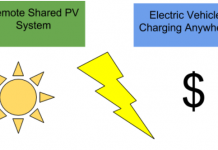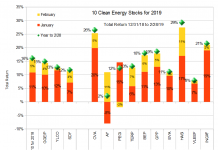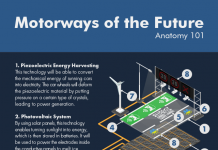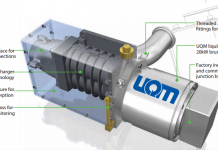Tom Konrad CFA
The easiest way to reduce fossil fuels is to increase vehicle efficiency. Government mandates already in place will ensure that such improvements occur. Some stocks may benefit from the trend, but choose carefully.
Dr. Daniel Sperling knows about as much as anyone about what policymakers can do to reduce the use of oil. He is the Director of the Institute of Transport studies as the University of California Davis, and a long time member of the California Air Resources Board (CARB), so he understands transportation from both the academic and policy perspectives. He also recently co-authored a book Two Billion Cars: Driving Towards Sustainability, so he understands the magnitude of the problem as well.

I had the pleasure of hearing Dr. Sperling speak at the Yale Climate and Energy Institute’s first annual conference: Overcoming Barriers to A New Energy System on April 24th. In his talk (you can download the PowerPoint here[13MB],) he provided an illuminating analogy: Transforming transportation is like a three-legged stool. The first leg is improving vehicle efficiency, which is easiest because we have both the technology and the regulatory tools to do it. The second leg is transitioning to alternative fuels, which is harder because in most cases the technology or the infrastructure are not quite there yet (The first eight parts of this series looked into various alternative fuels, and reached a similar conclusion.)
The third leg, labeled “VMT” for Vehicle Miles Traveled is the transformation of the transportation system, reducing car usage by providing alternatives and giving people better incentives to use the most effective alternative. From a policy perspective, VMT is the most difficult leg. Reducing VMT requires the policy maker to persuade people to change their habits. This is difficult in a democracy, were citizens and businesses typically oppose policies that require change.
For example, one fairly straightforward way to incentivize VMT reductions would be to mandate that auto insurance, registration, and license fees fees be charged on a per-mile basis, as opposed to an annual basis. For the average driver, these fees amount to about 9.4¢ per mile, compared to about 6.9¢ per mile for fuel. A change to per-mile charges would increase fairness because people who drive more cause more accidents, road wear, and congestion, and the poor tend to drive less than the rich, so per-mile charges would also make driving more affordable for them. Yet, while low-mileage drivers would see significant savings from per-mile charges, rural drivers and suburban drivers with long commutes would see large increases (unless they were able to reduce their driving by combining trips, carpooling, or shifting to public transit.) Auto insurance companies may lobby against VMT charges because it would require them to change. They may also fear that the policies will be successful in reducing driving and accidents, undermining their market. High mileage drivers often unite with auto insurance companies to oppose any proposed change, while low mileage beneficiaries are often unaware of the potential benefits to them.
The Easy Leg: Vehicle Efficiency
According to Dr. Sperling, in the last twenty-five years, auto manufacturers have made great strides in engine efficiency… but they have used the progress to deliver more power at the same MPG, rather than increasing MPG. Since 1985, average fuel economy has dropped 5%, while vehicle weight has risen 29% and average horsepower has increased 86%. That’s what makes vehicle efficiency easy: even without further advances in engine efficiency, we could greatly increase fuel economy by just returning vehicle weight and horsepower to 1985 levels.
In February, our own John Petersen provided a list of technologies for increasing vehicle fuel economy, compiled from a report by Robert W Baird & Co. The table shows nine different technologies, many of which can be combined in a single vehicle which increase vehicle efficiency an average of 12.5%.
| Efficiency | |
| Hybrid Electric Technologies | Gain |
| Prius-class strong hybrids with idle elimination, electric-only launch, recuperative braking and acceleration boost. | 40% |
| Insight-class mild hybrids with idle elimination, recuperative braking and acceleration boost. | 20% |
| Engine Technologies | |
| Direct Fuel Injection (with turbocharging or supercharging) delivers higher performance with lower fuel consumption. | 11-13% |
| Integrated Starter/Generator Systems (e.g. stop-start systems) automatically turn the engine on/off when the vehicle is stopped to reduce fuel consumed during idling. | 8% |
| Cylinder Deactivation saves fuel by deactivating cylinders when they are not needed. | 7.5% |
| Turbochargers & Superchargers increase engine power, allowing manufacturers to downsize engines without sacrificing performance or to increase performance without lowering fuel economy. | 7.5% |
| Variable Valve Timing & Lift improve engine efficiency by optimizing the flow of fuel & air into the engine for various engine speeds. | 5% |
| Transmission Technologies | |
| Automated Manual Transmissions combine the efficiency of manual transmissions with the convenience of automatics (gears shift automatically). | 7% |
| Continuously Variable Transmissions have an infinite number of “gears”, providing seamless acceleration and improved fuel economy. | 6% |
The table shows it should be possible to increase fuel economy by the 40% from 2009 levels by 2016, as required by current law using only engine and transmission technologies. Hybrid technology, smaller vehicle size, light weighting, low rolling resistance tires, better aerodynamics, or reducing engine power could each increase efficiency further. Hence, automakers have a wide variety of potential strategies to meet the 2016 targets wit
h existing technology. While this plethora of options is good news for automakers, it is not all good news for investors. With the wide choice of existing options for increasing fuel economy, it’s difficult to foresee which technologies will bring the greatest returns to investors. Further, few of these technologies are proprietary to any single publicly traded company.
Stocks
Here are three companies from our Clean Transportation stock list that earn a fairly large proportion of their revenues from vehicle efficiency:
- Clean Diesel Technologies (CDTI) is a more focused company that might benefit from a larger market for its diesel emission reduction technologies if higher fuel economy standards lead to shift to diesel engines. Since they operate in most diesel engine markets, changes in the automotive diesel market will be only one driver of profitability.
- CVTech Group (CVTPF.PK, CVT.TO) is a Toronto listed company with a division focused on Continuously Variable Power transmission in small vehicles. Its other divisions provide construction and maintenance for electrical transmission and distribution in Quebec and the Northeast US. While transport accounts for only 12% of sales, I include CVT in this list because electrical transmission one of my favorite sectors. See my Year of the Strong Grid series for more on electricity transmission.
- UQM Technologies (UQM) designs and manufactures permanent magnet electric motors and drive systems for electric and hybrid electric vehicles. They have sold technology to all six major automakers for electric vehicle and hybrid electric vehicle development programs, and are also working with several automotive start ups, most prominently CODA automotive.
Two other auto parts suppliers have expertise in some of these efficiency technologies.
Borgwarner (BWA) produces engine and drive train components, including turbochargers and variable cam timing, while Magna International (MGA) is a diversified automotive supplier with some expertise in hybrid and electric vehicle systems. However, I don’t think that these constitute enough of their business to consider their stocks to be vehicle efficiency investments.
Also not on the list are the large number of manufacturers of batteries, and the auto manufacturers themselves. Batteries are a critical component for hybrid vehicles, as discussed in part II of this series, but I chose not to include them in order to highlight manufacturers of other components. For an in-depth discussion of battery company investing I recommend John Petersen’s recent articles Common Sense in energy Storage Investing, and More Common Sense in Energy Storage Investing on AltEnergyStocks.com.
Conclusion
Clean Diesel Technologies, CVTech, and UQM may benefit from government mandated increases in vehicle efficiency through increased demand by automakers for their products. However, higher oil prices and the increased cost of cars may undermine these gains by undermining the market for cars. A declining car market could occur if people drive less because of high fuel pricesand delay purchases of new cars. If gains in market share do not outpace market shrinkage, automotive efficiency investors will be disappointed.
Cars are only a slice of the larger transportation pie, so there are companies that can benefit from shrinkage of the automobile market. Below is a graph from Dr. Sperling’s talk, where he projects broad growth in all classes of motor vehicles.

I believe this graph overestimates the growth of the personal car, and that buses, cycles, and scooters will take a relatively larger share of the motor vehicle market. I also believe that public transit and telecommunications may take an increasing share of the overall transportation services market, which may reduce the overall number of vehicles shown in the projection.
Investors looking for the purest automotive efficiency stock should choose UQM Technologies (UQM), which is more focused on the automotive market than Clean Diesel Technologies (CDTI), although both have significant exposure to other sorts of vehicles. Investors interested in both electricity transmission and automotive efficiency should take a look at CVTech Group (CVTPF.PK).
Shifting Away From Cars
I personally prefer companies that can grab parts of the transportation pie away from auto and air travel, since I believe that betting on the general shift away from cars is a surer than betting on any one vehicle efficiency technology. I will cover companies benefiting from this shift later in this series on peak oil investments.
Investments in alternative forms of transport depend on behavior change to be profitable. Most people will not change their behavior on their own, and most of us have difficultty imagining giving up our car to ride the bus or biking. Most jobs currently don’t encourage telecommuting. There is an oft-repeated mantra in business circles that deals can only be done face-to-face, and so business air travel will continue despite the rise of increasingly effective teleconferencing services.
The inability to envision a world where we travel less or by alternative modes represents conventional wisdom. But I believe that rising fuel prices will get people and businesses to do a lot of things that they cannot currently envision when gas is a mere $3 a gallon. If they won’t stand for politicians to tell them to get out of their cars today, when gas is $10 a gallon, they’ll be clamoring for those same politicians to provide mass transit and mandate that employers allow telecommuting.
Investors who can foresee a future that most other investors cannot currently imagine stand to make out-sized profits compared to the mass of investors who expect business as usual.
DISCLOSURE: No positions.
DISCLAIMER: The information and trades provided here are for informational purposes only and are not a solicitation to buy or sell any of these securities. Investing involves substantial risk and you should evaluate your own risk levels before you make any investment. Past results are not an indication of future performance. Please take the time to read the full disclaimer here.








